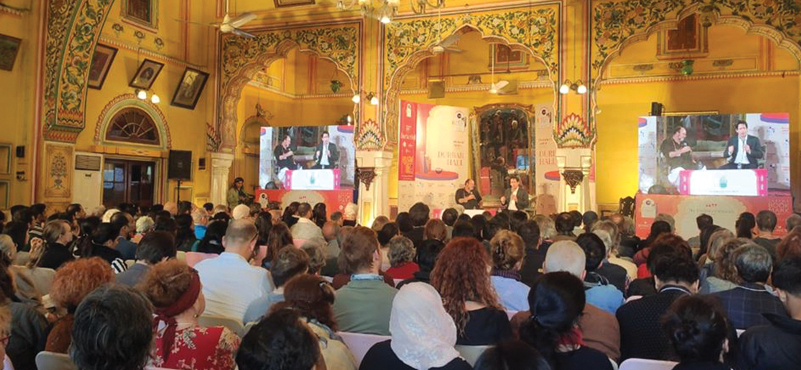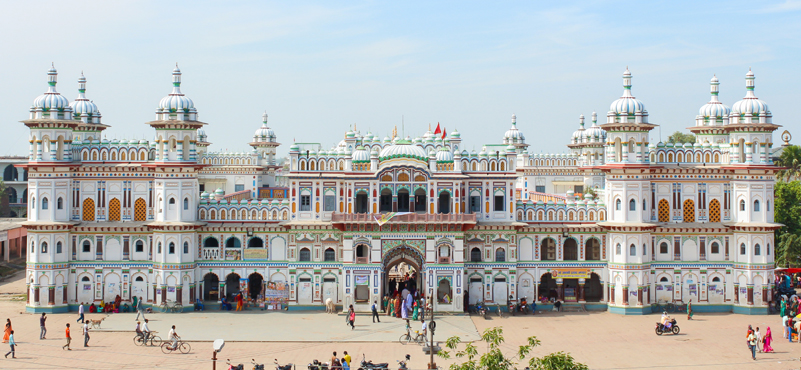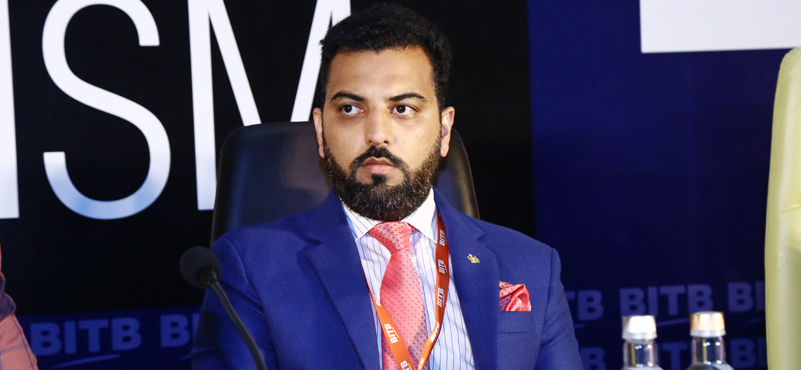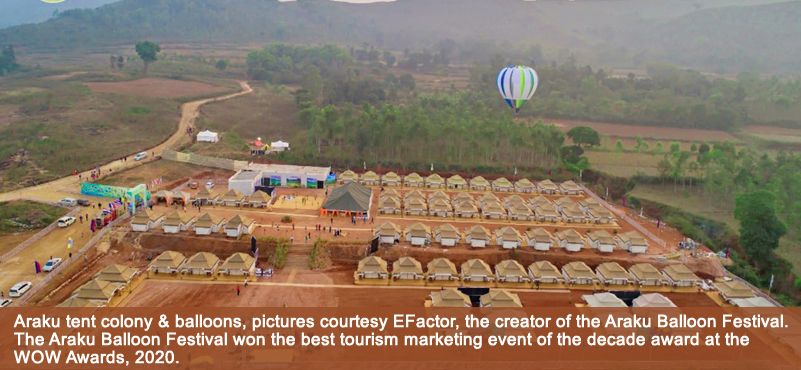The Jaipur Literary Festival has indeed become as integral to Rajasthan’s already vibrant annual calender, so much so, it is now vying for space amongst tourists as its legendary festivals. Precursor to some 200 more such festivals, its best tribute must be the clones it has fostered in India and overseas.
Founded in 2006, it is described as the world’s largest free literary festival. That’s not too difficult a feat given it is in India, but there is little doubt that the Jaipur Literature Festival (JLF), now prefixed by its controversial main sponsor Zee, has put the capital of Rajasthan on the global cultural map. Presided over by Festival co-directors, the expansive Pasha-like figure of author William Dalrymple and the grande dame of Indian English writing Namita Gokhale, and supervised with artful carelessness by Teamwork Arts’ Managing Director and Festival producer Sanjoy K. Roy, JLF has become an international brand that has spawned many copycats–at last count, as many as 90 literary festivals all over India.
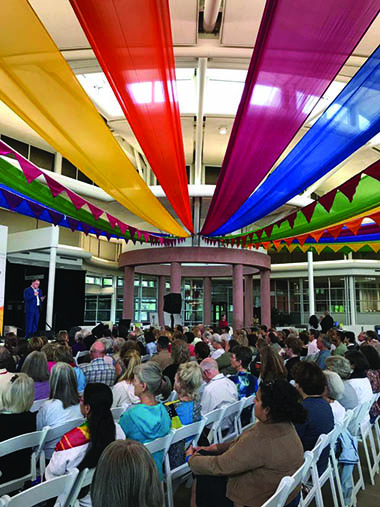 It has put a somnolent 1860s palace right in the heart of high art. All one has to do is to sneak into the author’s lounge, unless one is a speaker in which case it is a free pass, to endless cups of coffee and lots of conversation. In a corner there will be the venerable actress and chef Madhur Jaffrey taking a quiet nap. In another, Sonali Bendre will be catching up on gossip with her girl gang. Former Rajasthan chief minister Vasundhara Raje will be rushing in while former Union minister Jairam Ramesh will be rushing out. Rachel Dwyer, Sanskrit scholar and professor at the School of Oriental and African Studies in London, doesn’t bother to go to Delhi or Mumbai when she visits JLF on her trips to India. “I meet everyone I know here,” she says.
It has put a somnolent 1860s palace right in the heart of high art. All one has to do is to sneak into the author’s lounge, unless one is a speaker in which case it is a free pass, to endless cups of coffee and lots of conversation. In a corner there will be the venerable actress and chef Madhur Jaffrey taking a quiet nap. In another, Sonali Bendre will be catching up on gossip with her girl gang. Former Rajasthan chief minister Vasundhara Raje will be rushing in while former Union minister Jairam Ramesh will be rushing out. Rachel Dwyer, Sanskrit scholar and professor at the School of Oriental and African Studies in London, doesn’t bother to go to Delhi or Mumbai when she visits JLF on her trips to India. “I meet everyone I know here,” she says.
Indeed, though there are enough selfie-seekers and autograph-hunters among the thousands who attend, there are also those who listen patiently to the ideas and iconoclasms on display. It could be, as it was this year, Elizabeth Gilbert talking about why marriage is a terrible idea for women, with statistics to prove. It could be Shashi Tharoor talking about anything at all and leaving his fans drooling. Or it could be Suketu Mehta preparing to speak at length about Gujaratis and their love for migration – perhaps holding some special lessons for two Gujarat’s at the helm of affairs in Delhi. Or even The New Yorker columnist, young Anand Gopal, who shared war stories from Afghanistan and Syria.
JLF as a brand represents Jaipur, Rajasthan and India, and its diversity, colour, heritage and celebration of culture, says Sanjoy K. Roy of Teamwork Arts. BN Goswamy, the eminent art historian who, among other things, discovered the Pahari painter Nainsukh which the world now cannot get enough of, has been coming here for some years now, this time braving the nine-hour train journey from Chandigarh to Jaipur, quite an arduous task for an 87-year-old. He finds the festival “energising” not just because he can meet fellow authors but also because of the young people who come in droves. “Even if they are here for social media posts,’’ he says, “at least they will learn something.”
Not to say that these are the only considerations. Sometime the most difficult decision can be to choose which party to attend, to drink at the City Palace’s swanky restaurant Baradari or to eat Indian Accent worthy food at Mita Kapur’s old haveli — one of the urban legends about the food there is that several women get together for four days to shell peas to feed the many who attend the party.
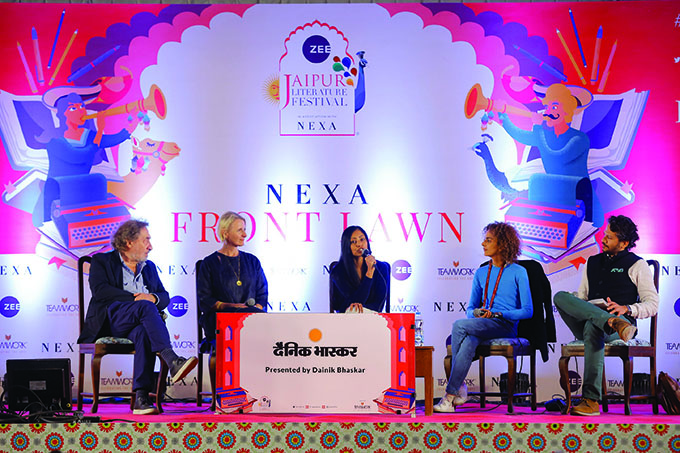
Jaipur was always known for its heritage hotels and for its smart maharajas and maharanis who discovered the taste for royalty has outstripped the stripping of privy purses, but JLF has added a cultural class to it, making it a new artistic hub. Apart for Diggi Palace which hosts JLF, there is now the Jawahar Kala Kendra, a Charles Correa built space that now hosts art exhibitions and cultural events. There is the Sculpture Park at Nahargarh Fort. And there is the shopping, which can range from bargain hunting at Johri Bazaar to looking for Nicole Kidman worthy earrings at Jaipur’s very own Oscar brand, Amrapali.
JLF hosts at least 300,000 visitors every year, and the city’s second generation entrepreneurs are keeping pace with the cultural demands, with unique brands whether it is bespoke luxury watches by Gaurav Mehta or custom made motorcycles by Vijay Singh Ajairajpura of Rajputana Customs. There are swish restaurants and kitschy cafes. Nand Bhardwaj, JLF’s regional consultant, has witnessed the change in the city over the 12 years of JLF. He says the city has developed a liking for literature which was hitherto unexpected. “There are, of course, dangers of growing commercialisation,’’ he says. But overall, he feels it has established Jaipur as a cultural beacon, especially for those who have seen it since its inception.
This transformation of Jaipur is precisely what drew Boulder, Colorado, to JLF. The city which is better known for its access to ski slopes is more sporty and less cultural, and the idea behind inviting JLF was to grow the culture of the mind. The reinvention of Jaipur has made its younger generation more aware of its heritage and its possibilities, reimagining it as more than a weekend getaway for shopping and eating for Delhi.
Some have been coming to JLF every year since the inception. Writer Shobhaa De is among them, and she is as enthusiastic as she was when she came here
12 years ago. The woman who wrote about
society princesses and ageing tycoons much before it became fashionable, in an India that
was in the midst of opening up, endorses the festival’s spirit.
Author Sandip Roy, a regular who opted out this year, says he has heard friends in England talk about seeing India travel packages that have added the Jaipur Literature Festival to the golden triangle itinerary alongside the usual staples like Taj Mahal. ‘”I’ve seen Rajasthan tourism promote the lit fest as Festivalsthan. And certainly it’s always filled with foreign tourists enjoying not just the talks but also the music stage and they certainly see a bit more of Rajasthan than just JLF and shop for more than books at Jaipur which is why you see so many folk art craft vendors line the route to Diggi Palace which you certainly don’t see at other lit fests. I mean it’s certainly true as a Chinese American writer once told me, literary life is usually at best cheap wine in some library conference room not exotic cocktails at Rambagh Palace. The latter is really something straight out of a tourism brochure.’’
Its best endorsement though come from the fact that it has managed to outlive three regime changes, from Ashok Gehlot to Vasundhara Raje to Gehlot again. There is much talk of the festival moving from Diggi Palace to a new convention centre. The vibe there might be different but the content will remain the same, and perhaps even better.
– by Kaveree Bamzai in Jaipur

